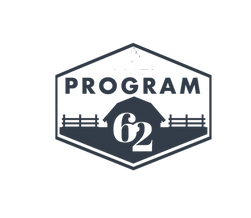Taking the First Steps to Become Better Prepared: A Beginner’s Guide
Preparedness doesn’t mean living in fear or paranoia—it’s about giving yourself confidence by knowing you can handle unexpected situations. Whether it’s natural disasters, power outages, or other emergencies, being prepared helps you respond calmly and effectively when challenges arise. If you’re new to the idea of preparedness, it can feel overwhelming, but it doesn’t have to be.
Here are three simple, actionable tips to help you get started.
1. Create a Basic Emergency Kit
An emergency kit is one of the first things anyone can put together to increase preparedness. It should include the essentials that you and your family would need to survive for at least 72 hours during a disaster or unexpected situation.
What to Include:
• Water: Plan for at least one gallon of water per person per day for three days.
• Non-perishable Food: Enough food for at least three days (think canned goods, protein bars, etc.). I prefer Meals Ready to Eat (MRE’s) for my immediate emergency supply. They don’t require a stove to prepare a warm, calorie-dense meal in a pinch. Peak Refuel is my favorite freeze-dried food. But remember to have a portable stove, fuel, and pot if you have freeze-dried meals.
• Extra clothing: Appropriate for likely weather you may face.
• First Aid Supplies: Include bandages, antiseptic, medications, and any personal prescriptions.
• Flashlight & Extra Batteries: Light is essential if the power goes out
• Basic Tools: Duct tape, multipurpose tools, or a utility knife can come in handy. The following are good options for multi-tools and knives:
Morakniv Companion Spark 3.9-Inch Fixed-Blade
• Survival Kit: Fire starting material, cordage, whistle, notebook, sharpie/pen, etc. The Esse Survival Kit is a good compact kit.
• Personal Documents: Copies of important identification and insurance policies. Include some cash in this as well.
Start small—having something ready is better than having nothing. Over time, you can expand and fine-tune your kit to meet your unique needs.
2. Build Situational Awareness
The entire first module in Program 62 is dedicated to Mindset and Situational Awareness. This is an important understanding to emergency and stressful situations. Being prepared isn’t just about having supplies; it’s also about staying aware of your surroundings and understanding potential risks. Situational awareness means knowing what’s happening around you and how that information affects your choices.
How to Improve Situational Awareness:
• Understand the stages of awareness: The Cooper Color Code of Awareness is great at helping us identify and channel our bodies natural response to stress.
• Stay Informed: Learn about risks in your area—weather patterns, emergency routes, local hazards, etc.
• Plan Routes & Escape Plans: Map out exits and escape routes for your home and work in case of an emergency.
• Practice Mindful Observation: Regularly pay attention to changes around you, even in everyday situations.
The better you understand your environment and potential risks, the better equipped you’ll be to make smart, proactive decisions when faced with challenges.
3. Learn Basic Survival Skills
Preparedness builds confidence when you take the time to learn foundational skills. These don’t have to be advanced or intimidating—start with the basics that can make a big difference during an emergency. Program 62 Module 8 covers Survival and Bushcraft. Then you can take a class with a reputable survival/bushcraft instructor. Spend time outdoors and learn skills. Practice them in a safe environment.
Simple Skills to Start With:
• Basic First Aid: Learn how to treat common injuries like burns, sprains, and bleeding. Many courses (in-person or online) can get you started.
• Water Filtration: Knowing how to purify water can be life-saving if you ever find yourself without access to clean drinking water.
• Fire Starting: Learn how to start a fire safely using multiple methods (matches, lighters, fire starters).
• Navigation: Learn the basics of using a map and compass to find your way if GPS isn’t available.
There are plenty of resources available, from courses to books and online tutorials. Choose one skill to focus on at a time and practice it until you feel confident.
Start Small, Build Confidence
Preparedness isn’t about perfection; it’s about taking the first step and building consistency. These three tips—creating a basic kit, improving situational awareness, and learning survival skills—lay the foundation for being ready no matter what life throws your way.
Remember: Every step you take toward preparedness is a step toward confidence and peace of mind. Start today, even with the smallest of actions, and trust that you’re building the foundation for a safer, more self-reliant tomorrow.
